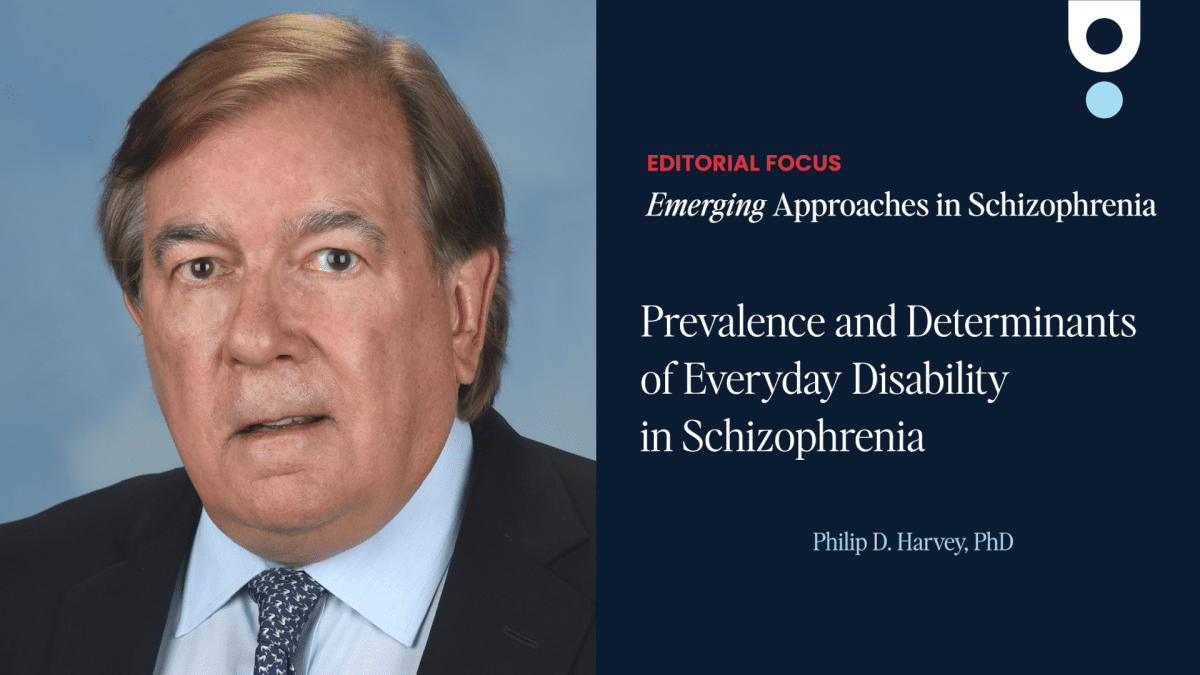Christoph Correll, MD
Professor of Psychiatry and Molecular Medicine
The Donald and Barbara Zucker School of Medicine at Hofstra/Northwell
Hempstead, NY
Christoph Correll, MD, Professor of Psychiatry at the Zucker School of Medicine at Hofstra/Northwell, Hempstead, New York, and Chair of the Department of Child and Adolescent Psychiatry at Charité University, Berlin, Germany. Dr. Correll is an internationally recognized expert in schizophrenia and related disorders, with a focus on the identification, characterization, and treatment of severe psychiatric conditions.
In this video, Dr. Correll examines the therapeutic potential of the muscarinic receptor system in schizophrenia treatment. He discusses how targeting muscarinic receptors may address cognitive and functional impairments, offering new possibilities for improving patient outcomes. Dr. Correll highlights the role of these approaches in advancing care beyond traditional treatments.
This presentation is part of the Emerging Approaches in Schizophrenia Editorial Focus collection from Psychiatrist.com News. The collection focuses on the latest advances in schizophrenia treatment, with an emphasis on emerging therapies that go beyond traditional dopaminergic approaches.
To learn more and watch more videos, visit our Emerging Approaches in Schizophrenia collection.
Transcript
[00:12 – 01:35] Introduction to Muscarinic Modulators and Their Development
Hello, I’m Dr. Christoph Correll and today I’ll be talking about what is the efficacy and safety of muscarinic receptor modulators in patients with schizophrenia. Muscarinic modulators are a new class of antipsychotics. Since September 26, 2024, we have the first member of that class approved by the FDA for the treatment of schizophrenia.
And that is xanomeline-trospium, a combination of an M1M4 agonist xanomeline with a peripherally restricted anticholinergic trospium to buffer the side effects peripherally of xanomeline. The first study was a phase 2B study where xanomeline-trospium beat placebo in a five-week study having an effect size published of 0.75 but recalculated of 0.81. Let’s put that into context. Across all antipsychotics in a meta-analysis by Huhn et al. in 2019 in Lancet, the overall effect size across all antipsychotics was 0.42. And for risperidone, 0.55. For olanzapine, 0.56. So this is a very strong effect size. The study was conducted for five weeks. There was a one-week titration phase with 50 milligrams of xanomeline and 20 milligrams trospium for two days.
[01:36 – 03:05] Efficacy and Side Effects of Xanomeline-Trospium
Then another five days of 100 milligrams of xanomeline and 20 milligrams trospium. And then as of day eight, the highest approved dose of 125 milligrams of xanomeline plus 30 milligrams of trospium. There was good efficacy for total PANS where I just mentioned what the effect size was, but also positive symptoms improved, negative symptoms improved significantly, and the CGI, the clinical global impression severity scale.
However, there were also side effects, both procholinergic, nausea in about 17%, vomiting in about 9%, but also anticholinergic side effects like dry mouth, 9%, constipation, 17%, and dyspepsia, also 9%. However, when looking at the side effects more closely, they seem to emerge in the first one or two weeks, and then the peripheral effects attenuated. By week three, almost all of them were done and gone, and the side effects were only mild to moderate.
That’s interesting that because of that trajectory of the side effects and there being only mild to moderate, there was also a very low discontinuation for adverse effects. It was only in that study 2% in the trospium-xanomaline combination versus 2% on placebo.
[03:06 – 05:08] Comparing Phase Studies and Cognitive Benefits
After the phase 2B study, there were two phase 3 studies that totally replicated the results in terms of good effect for total PANS with an effect size of 0.61 and 0.60, which is very well understood that in larger studies, the effect size drops a little bit, but pooling that together for total PANS, the effect size is 0.65, which is still quite respectable.
Remember, 0.2 is a small effect size, 0.5 medium, 0.8 is large. There were also similar effects on positive symptoms, and in one of the two studies, also significant for negative symptoms. In terms of pooled side effects then, there were side effects, but again, a very small contribution to discontinuation for adverse effects.
5.6% pooled across the three studies on xanomaline-trospium and 4.7% on placebo. In terms of side effects per se, there was 18.5% nausea and 13.5% vomiting. 30% of patients had vomiting only once, and those are the procholinergic side effects.
And then of the anticholinergic side effects, there was 17% constipation, 15% dyspepsia, and also 5% dry mouth. But again, these side effects were mostly very tolerable, at least in the context of a randomized control trial that was an inpatient study where nursing staff was around people. And the question is, how will that translate into the real world now that we have this medication approved by the FDA? In addition to the effect on psychosis in the acutely exacerbated patients across these three studies, there was also a measurement of cognition since the M1M4 stimulation can lead to antipsychotic effects, but the M1 stimulation, particularly in the frontal lobe, can also improve cognition.
[05:09 – 06:08] Exploring Next-Generation Modulators in Clinical Studies
What was found there was that across the three studies, when you took all patients that were in the acutely exacerbated studies, or studies of acutely exacerbated patients with schizophrenia, there was a non-significant effect on cognition. However, when the 50% of patients were analyzed that had at least one standard deviation below the general population norm and had most relevant cognitive impairment, the effect on cognition was statistically significant and clinically meaningful with effect sizes of about 0.5. And although this was an acute study, there was no clinically determinable effect that it only would improve the cognition in patients that also had strong improvement in positive or total symptoms. However, to verify that, studies are needed that would look at patients who have stabilized positive symptoms.
[06:09 – 07:58] Future Outlook: Dosing and Side Effects
Falling on the heels of this M1M4 agonist xanomeline-trospium approved by the FDA, there is also an M4 positive allosteric modulator called emraclidine, which in a phase 1B study, very small, 27 patients only in each group, also showed statistically significant effects and effect sizes that were very meaningful by the end of week six. And that was for the 20 mg twice a day of 0.59 effect size and the 30 mg once a day, which is carried forward right now in phase 2 studies with an effect size of 0.68. So again, a very respectable effect size. The effect was significantly better than placebo for the total symptoms, but also PANS positive and PANS negative symptoms, as well as the clinical global impression severity scale.
Side effects here were very limited because this is a very specific M4 modulating medication, emraclidine, and therefore no anticholinergic periphery is needed. And there’s also no spillover into the periphery or very limited. The only side effect that had double digits and was different from placebo was dry mouth of 11%.
There was also a double digit side effect of headache of 26% and 30%, but it was also present in 26% of patients with placebo. This is a once a day dosed medication and we don’t have a titration needed, whereas xanomeline-trospium is twice a day dosing and has the titration needed that I mentioned initially. Thank you for your attention and I hope that this was helpful information to you.




